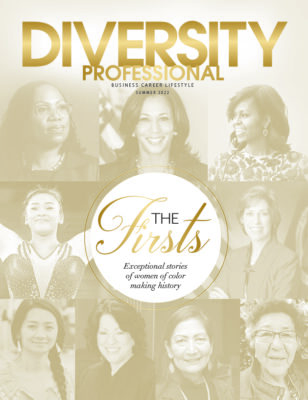Complex Conversations In Diversity, Equity And Inclusion
How to support individuals just arriving to the DEI table.
In the Diversity, Equity, and Inclusion (DEI) space, everyone has their own style and convictions with the work being done. For some people, it is to come across intense and combative in the attempts to take down the strong and inherent structures of racism. Others go about it in a more subtle manner. And some sit in the middle. It is important to create a balance between saying what needs to be said (without diluting the work), while also extending an amount of grace to people who are late to entering the conversation or not quite as knowledgeable. The truth is, many people are just “waking up” to racism, privilege, and structural disenfranchisement. Of course, it can be easy and ideal to work with companies and organizations who are already “awake and aware” of the concepts of unconscious bias and systemic racism. But that is not the case. Many times, people are just now coming to the DEI conversation.
It Can Be Hard to Face White Privilege
The reality is that it’s hard for white people to face white privilege. But it should not be viewed as a burden or a source of guilt. See it as an opportunity to make a difference, to create a more equitable world. The more people grow their awareness of privilege, the more there can be unintentional shaming. That’s a problem, but also an opportunity in our space. There 100% needs to be more representation at the C-suite level (and all levels) with Black, Indigenous and People of Color (BIPOC). We must find ways to support them so that next year, when we have this conversation, they now have BIPOC in C-suite roles and look back on these conversations as things from the past. We must extend grace in that they could only now be getting the revelation and the awareness toward equity. That said, the lack of awareness does not exonerate us from others experiencing the consequences of our actions. This is why this work must be done.
“We need a plan that can expand over multiple years and goes over all elements of our organization so we can deliver on DEI in everything that we do.”
Supporting the Change
Instead of demonizing people for potential and initial performative actions, how do we ensure we provide support and guidance so the change they make is real and the words they put out have weight to stand on? It begins with us recognizing and standing firmly that the main goal is to work toward creating equity in society, business, and life. Be encouraged by the shift in how people are asking about DEI services now. It used to be quick requests of “I need a training” or “I need an assessment”. Now, it’s more action oriented. People are coming to the table with a long-term attitude, after experiencing a paradigm shift around this work, with “We need a plan that can expand over multiple years and goes over all elements of our organization so we can deliver on DEI in everything that we do.” Let’s not hinder that progress because we might have to take steps back in giving people a safe way to enter the conversation.
We Can’t Only Lead With Our Emotions
This may not be a popular belief, but sometimes we have to quiet our egos and emotions, and lead with intellect. There would be no point (and frankly no jobs) in the DEI world if we expected people to “get it” right out of the gate. And that might mean the entryway into the conversation is allowing people to not be at a place where we’d ideally like them to be. People have been conditioned to operate as they are, and our job as DEI practitioners is to support and create the shift in their mindset and actions. Do we attack or denigrate them? Or do we find ways to engage them and build trust—and use that trust to help shift the world? Navigating this concept is difficult. We can’t just go around throwing anger, aggression, or extreme judgment at others. If we react too emotionally when doing this intense work, where our outcomes are tied to business data and results, it can hamper our ultimate goal of equity for reactivity in the moment.
So, How Can You Support “Newly Aware” Leaders and Stakeholders?
Leaders are more open now than ever to take guidance from their chief DEI officers, heads of diversity, HR leaders, and/or DEI consultants. Let’s leverage that to the best of our ability. As practitioners, we must be willing to go on this journey with our clients. We are here to consult and support the shift. As people unlearn the historical and unconscious systems of inequity, we must help them think about some of those tough subjects they haven’t been able to broach or understand. These are business leaders who have to make many critical decisions all the time. While DEI is critically important, they have to also currently make decisions around COVID-19, the economy, hiring and firing, running the business, etc. As DEI practitioners and HR professionals, we need to be willing to manage up and say to those C-suite leaders that right now, you need to own carrying that banner, and all those who are direct reports will follow.
The Time Is Now
Right now, this is the perfect storm. We have nowhere to go but up. The question is—how do we blend these varied approaches (where we both denigrate the current racism and biases but also create a supportive space for action) where we are doing it and then getting impact and some results? How do we extend that grace and compassion for those who are just now open to engaging in this journey? It’s an ongoing process that involves education, communication, compassion, and work. And I encourage you to join the shift and the journey.









